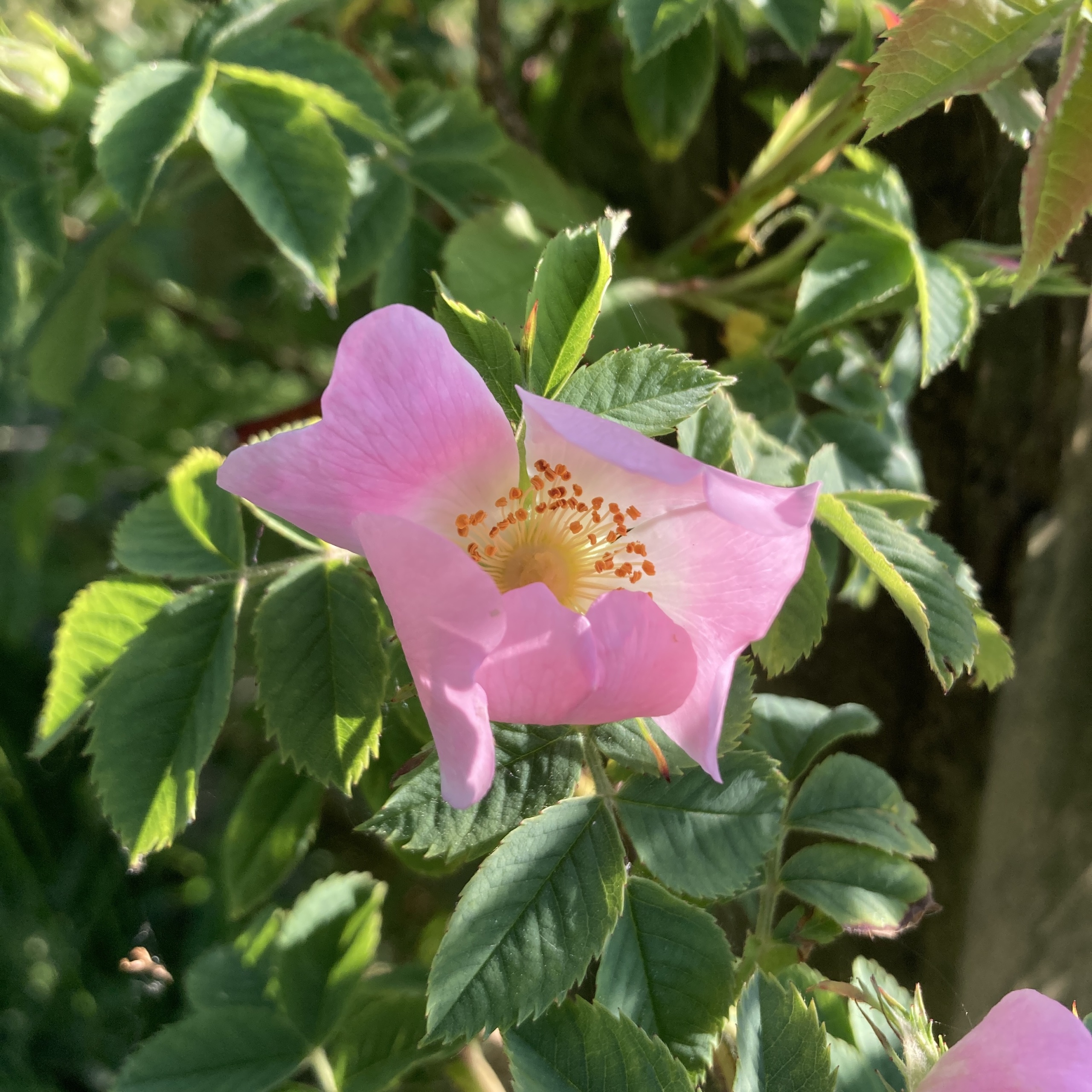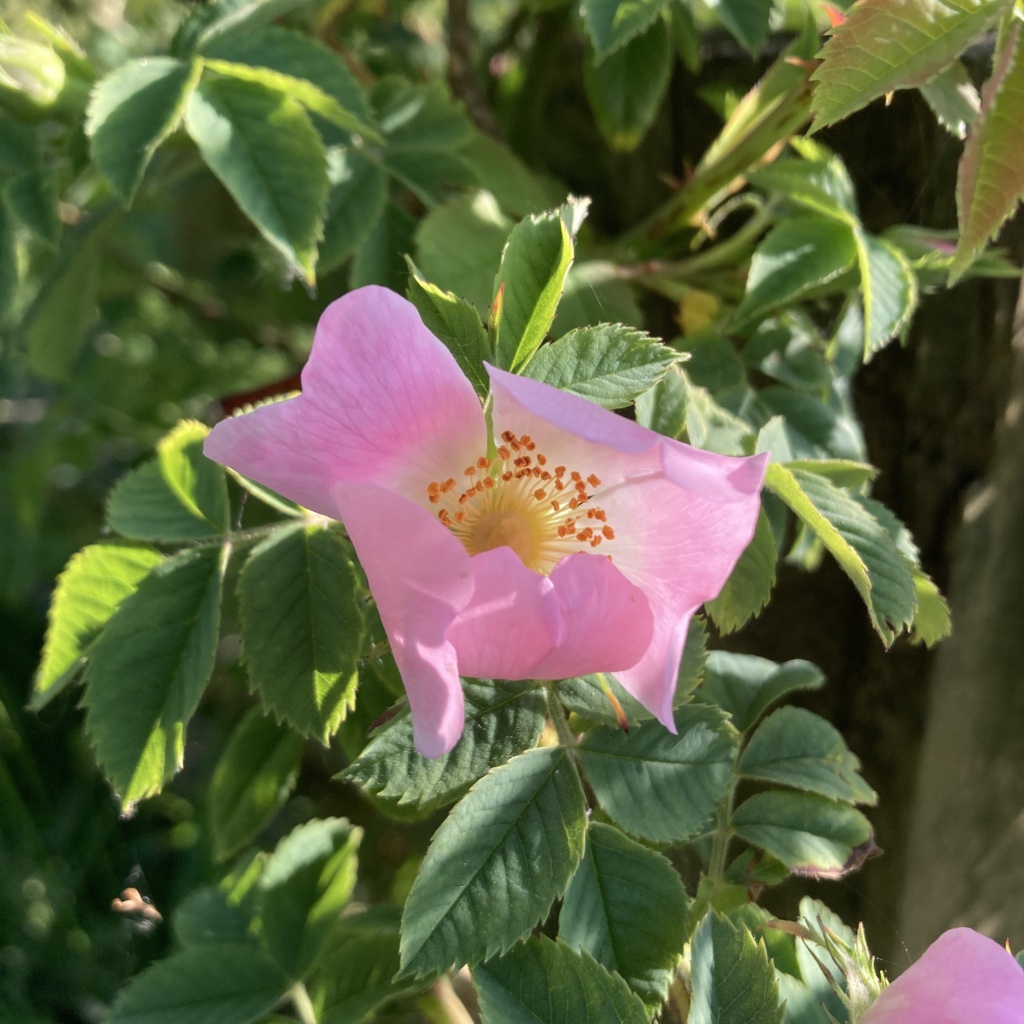
As a June baby, I am perhaps a little biased that this is the best month of the year. This isn’t without merit, however, as I hope you will see from what I have gathered below. This is based on observations and questions from the Summer Nights walk (3) on 1st June around Fairfield Nature Reserve. There was so much to see, a real abundance for the senses, and so much has changed in the last few weeks.
Our walk started from the Cromwell Road entrance to the reserve, through Flora and Fauna. Here we saw great willowherb (not yet in flower), some fox-tail grasses, yellow-rattle in flower and the first dog roses in bloom.
I’ve done some additional research to:
- help distinguish our two native oak species from each other.
- find out more about Ash Dieback.
- identify an insect species that I didn’t previously know.
I hope you find it as interesting as I have!
From tiny acorns do mighty oaks grow (but which species?!)
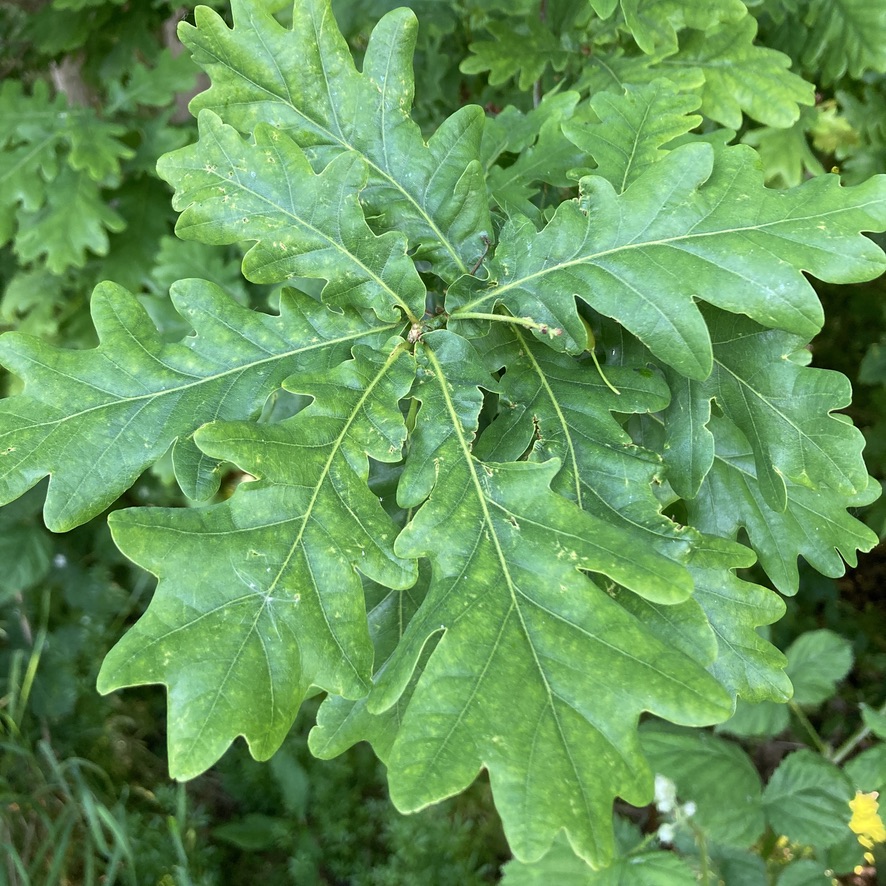
- English or pedunculate oak (Quercus robur)
- Deeply lobed leaves (and the leaf-lobes on each side of the leaf are not opposite to each other).
- The leaves often have little or no stem.
- There are auricles at the base of the leaf (look a bit like 2 little ears grasping the base of the leaf.
- The acorns are held on a long stalk (hence pedunculate). You can just see one in the image above.
- Widespread throughout Britain.
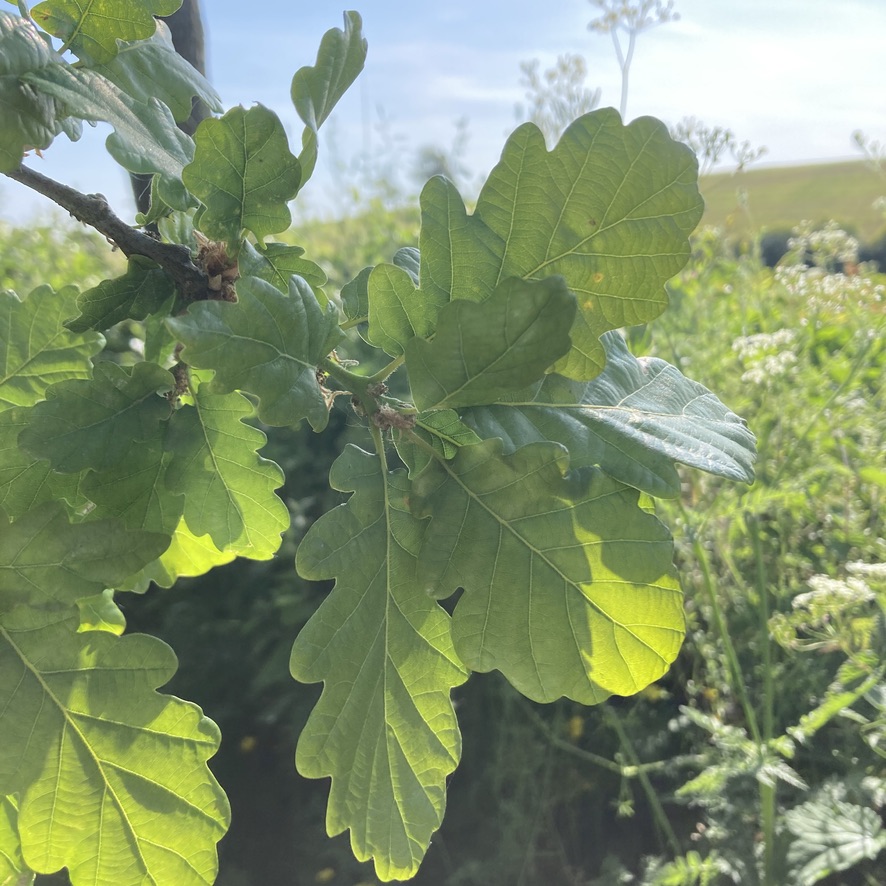
- Sessile oak (Quercus petraea)
- Shallower lobed leaves, with more lobes that are more or less opposite each other.
- The leaves have a longer stem.
- The acorns are held with no stalk (hence sessile).
- Tends to be found more in hilly areas (naturally) and more widespread in the west of Britain.
Both images above were taken at Fairfield Nature Reserve so we can be certain that both species are in the area. Confusingly, they hybridise, so there will be some individuals with characteristics of both species.
Ash die-back - will we lose this species?
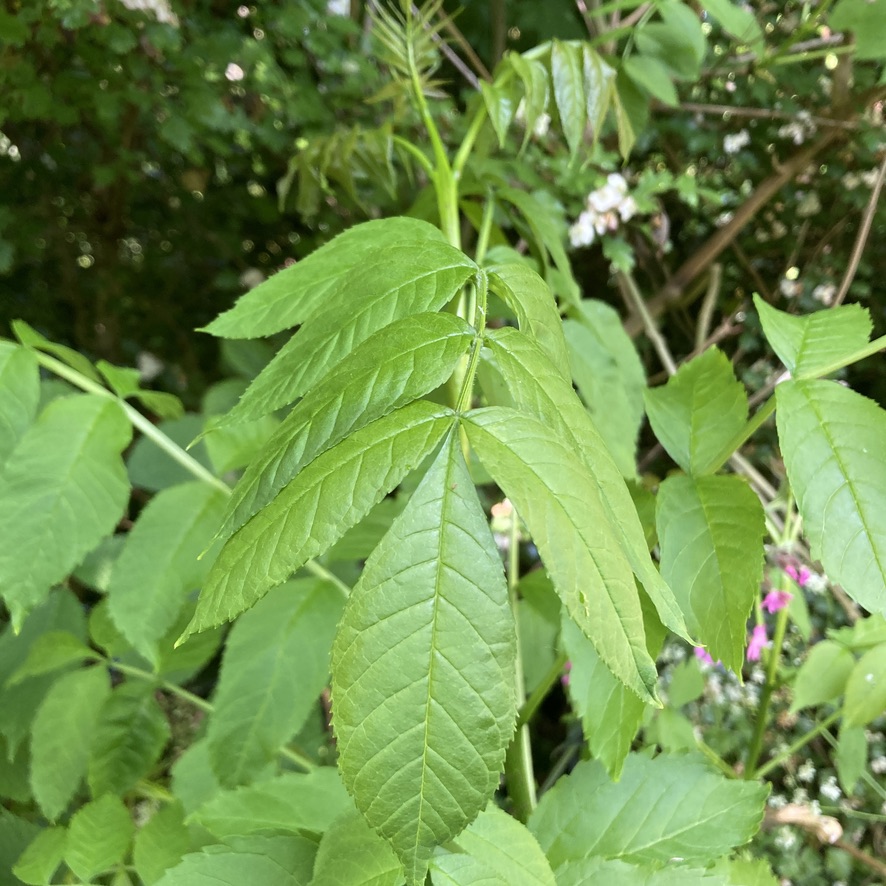
Add Your Heading Text Here
What is Ash die-back (ADB)?
It results from a fungus (Hymenoscyphus fraxineus) which is native to Asia but has now spread throughout Europe. It is believed that around 60% of trees that are infected will die from the disease.
What does this mean for the UK population of Ash?
Fortunately there are resistant individuals in the population. Research suggests (Evans, 2019) that at current rates of infection and resistance, that there will still be Ash in the UK 100 years from now, but vastly reduced (to around a third of current levels). However, with interventions based on breeding from resistant individuals it may be possible to slow the decline. In 2020 a research paper by Plumb et al. concluded that breeding from resistant ashes is viable. Hopefully this will help projects to be funded to protect this ecologically important species.
Why should we care about Ash?
This native species is an important part of woodland ecosystems supporting (either directly or indirectly) a large number of species. Due to the nature of its leaves and canopy, ash trees allow a light of light to reach the woodland floor. This means that the understorey is rich in flowering plants, which in turn provide pollen and nectar for butterflies, bees and other species. The trees themselves may be used by nesting birds and the seeds are often eaten by species such as bullfinches.
What does the future hold?
From what I have read, it seems that with some help, there is definitely hope for this species and we are not (currently) looking at a wipe-out on the scale of Dutch Elm disease. A large number of organisations in the UK are working to fight this issue (e.g. Woodland Trust), so there is definitely hope. In the meantime, there are clear signs all around that ash populations are succumbing to this disease. Next time you are out on a nature walk, see if you can spot the signs.
Lacey leaves - who's munching the dock?
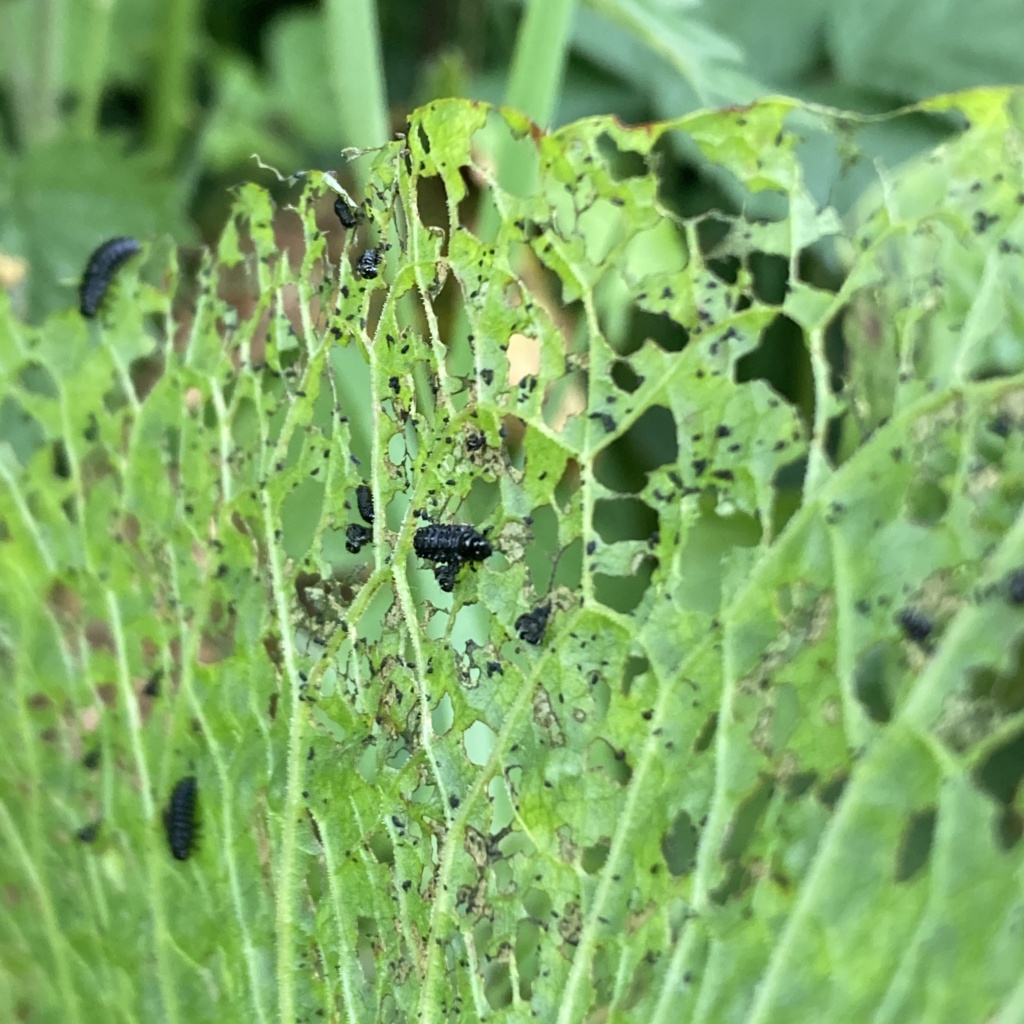
What’s eating you?
On our walk around Fairfield, we spotted some dock leaves (at the top of Pony Wood, towards the canal entrance) that had been more or less turned into a skeleton. In some cases very little, except the veins, was left! On closer inspection, the culprits were still attached.
A little research online indicates that the eater is a beetle larva, Gastrophys viridula. Native to the UK, it is a widespread species and the adults are very attractive, with a metallic colouration (variable depending on the light and angle of view). If you would like to find out more, there is a good species description on Wikipedia, along with some images of the adults.
And finally... a poem for June
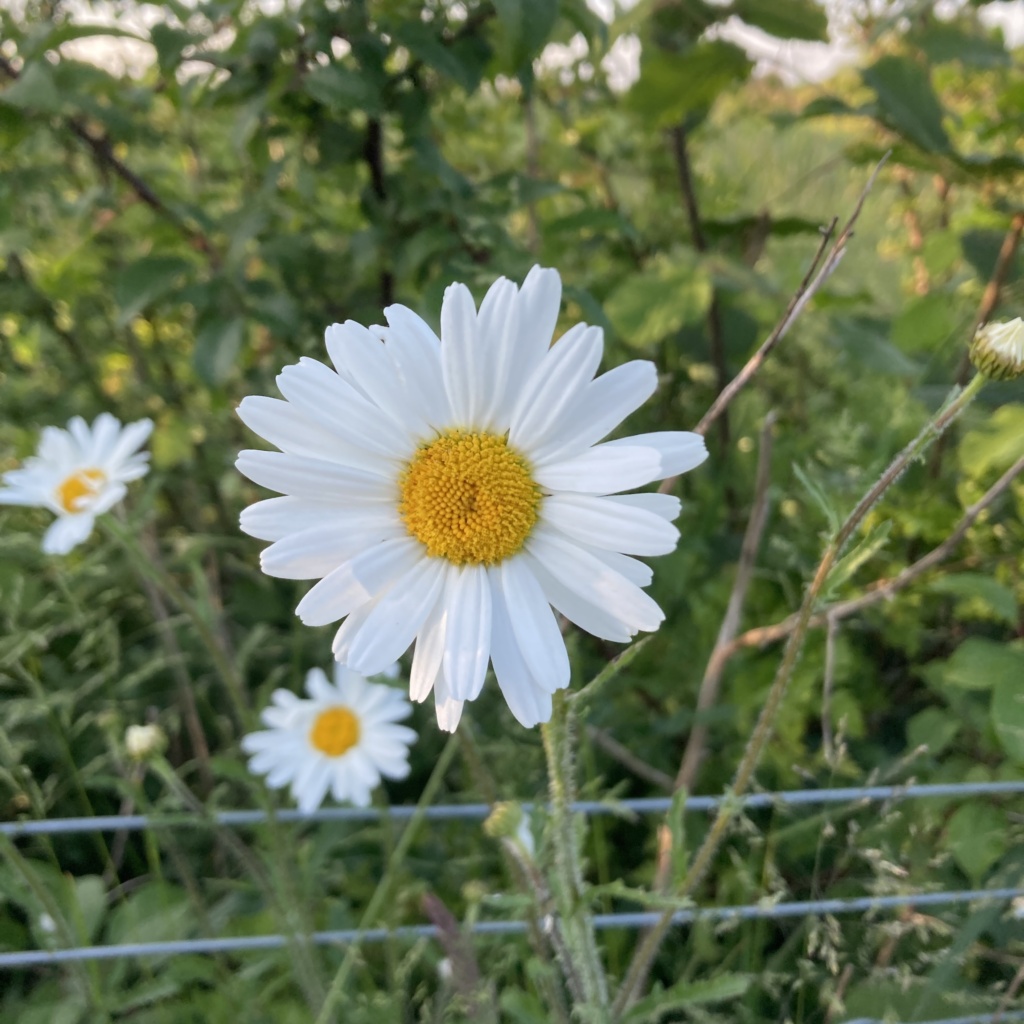
I read this poem during our walk on Thursday 1st June and it couldn’t have been more perfect (although we had no children with us!).
This poem is by Annette Wynne and is called ‘June’s Picture’.
Let me paint June’s picture—first I take some gold,
Fill the picture full of sun, all that it can hold;
Save some for the butterflies, darting all around,
And some more for buttercups here upon the ground;
Take a lot of baby-blue—this—to make the sky,
With a lot of downy white—soft clouds floating by;
Cover all the ground with green, hang it from the trees,
Sprinkle it with shiny white, neatly as you please;
So—a million daisies spring up everywhere,
Surely you can see now what is in the air!
Here’s a thread of silver—that’s a little brook
To hide in dainty places where only children look.
Next, comes something—guess—it grows
Among green hedges—it’s the rose!
Brown for a bird to sing a song,
Brown for a road to walk along.Then add some happy children to the fields and flowers and skies,
And so you have June’s picture here before your eyes.”

